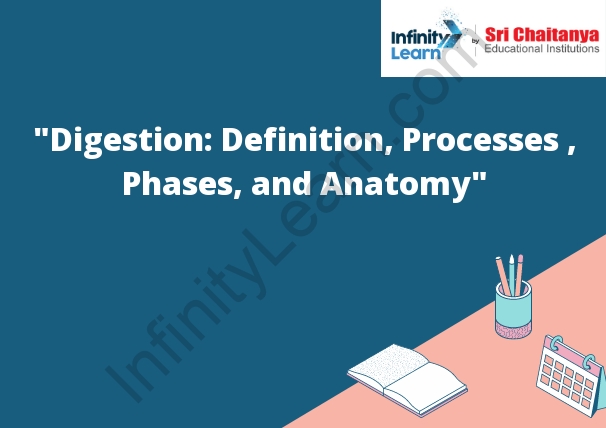Table of Contents
Digestion Process
Digestion: Definition: The digestion process is the process of breaking down food into smaller pieces so that the body can absorb the nutrients. The process starts in the mouth, where the food is mixed with saliva and broken down into smaller pieces. The food then moves down the esophagus to the stomach, where it is mixed with stomach acids and further broken down. The food then moves into the small intestine, where it is further broken down and the nutrients are absorbed. The food then moves into the large intestine, where the remaining water is absorbed. The food then moves out of the body as feces.

Mechanical Digestion
Mechanical digestion is the process that breaks down food into smaller pieces that can be absorbed by the body. This process begins in the mouth, where the teeth chew the food into smaller pieces. The food is then mixed with saliva, which contains enzymes that help break down the food. The food is then swallowed and moves down the esophagus into the stomach. The stomach muscles churn the food and mix it with stomach acids, which further break down the food. The food then moves into the small intestine, where more enzymes break down the food and it is absorbed into the bloodstream.
Chemical Digestion
The mechanical and chemical digestion of food in the human alimentary canal is called digestion. In the mouth, the teeth mechanically grind and chop the food and the saliva chemically begins to digest it. The food is then swallowed and passes down the esophagus into the stomach. The stomach muscles churn and mix the food with gastric juice, which contains hydrochloric acid and digestive enzymes. The food is then passed into the small intestine, where the pancreatic juice and bile are added. These juices contain even more digestive enzymes that break down the food into molecules that can be absorbed through the intestinal wall into the bloodstream. The food is then passed into the large intestine, where more water is absorbed and the waste products are finally eliminated as feces.
Phases Of Digestion
The digestive process is split into five phases: ingestion, digestion, absorption, elimination, and assimilation.
- Ingestion is the process of taking food into the body. This can be done through the mouth, nose, or eyes.
- Digestion is the process of breaking down food into smaller pieces so that it can be absorbed into the bloodstream. This is done by the digestive system, which includes the stomach, small intestine, and large intestine.
- Absorption is the process of taking the food that has been digested into the bloodstream.
- Elimination is the process of getting rid of the waste products that are left over after digestion. This is done by the urinary system and the digestive system.
- Assimilation is the process of using the food that has been absorbed into the bloodstream to provide energy and nutrients for the body.
Digestive System Anatomy and Physiology
- The digestive system is responsible for the breakdown and absorption of food and liquids. The digestive system is made up of the gastrointestinal (GI) tract- the organs from the mouth to the anus, and the liver, pancreas, and gallbladder.
- The GI tract is divided into the oral cavity (mouth), esophagus, stomach, small intestine, and large intestine. The oral cavity contains the teeth and tongue, which are used to break down food. The esophagus is a tube that carries food from the mouth to the stomach. The stomach is a J-shaped organ that stores food and digests it with acids and enzymes. The small intestine is a long, coiled tube that absorbs nutrients from food. The large intestine is a long, muscular tube that absorbs water and electrolytes from digested food.
- The liver, pancreas, and gallbladder are all located in the abdomen. The liver is the largest organ in the body and produces bile, which helps digest fats. The pancreas produces digestive enzymes and insulin. The gallbladder stores and secretes bile.
Anatomy of the Digestive System
The digestive system is a series of organs that breaks down food into smaller components so that the body can use it. The digestive system starts with the mouth, where food is chewed and mixed with saliva. The food then moves down the esophagus to the stomach, where acids and enzymes start to break down the food. The food then moves to the small intestine, where it is further broken down and nutrients are absorbed. The food then moves to the large intestine, where water is absorbed and the waste is excreted.
Ease the Digestion Process
Digestion is the process that the body uses to break down food into molecules that can be absorbed and used by the body. Digestion begins in the mouth, where the food is chewed and mixed with saliva. The saliva contains enzymes that start to break down the food. The food then moves to the stomach, where it is mixed with stomach acids and more enzymes. The food is broken down into small pieces and is then absorbed through the walls of the small intestine. The absorption of food molecules provides the body with the nutrients it needs to function.









